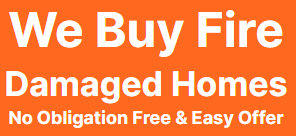Why You Should Board Up a House After A Fire
After a fire, there's no telling what damage a house might sustain. In some cases, only the walls might melt, and in other cases, only the roof might catch fire. So, when it's safe to return to your home, look around and get an idea of what needs to be done first. If the damage is significant, you'll need a contractor to help or even professionals, like firefighters or restoration service experts, who have experience dealing with the aftermath of a storm or fire. If the damage is minor, you can board up the holes and repair the damage yourself. Even if you don't have any construction experience, you can learn how to board up a house after a fire with the help of experts and reviews of services provided by restoration services in your area, such as Washington.
Why Board Up After a Fire?
There are several reasons you should board up your house after a fire. The most important reason is to protect your family and belongings from further damage. If a fire breaks out in your home, the intense heat and smoke could destroy your property.
If this happens, all that's left is a hollow shell. Your home's walls, roof, and floor could all be gone, and you'd be left with nothing but intruding flames and the ash they leave behind.
What to Expect From Boarding Up After a Fire
Boarding up a house after a fire is a very involved process. Depending on the damage, you'll have to remove damaged walls, doors, and ceilings, remove the floor, fill cavities with concrete, and replace the floor. This process can take a couple of weeks to a few months. Therefore, you should expect to be occupied with the task for a good portion of that time. Professional cleanup and restoration services can help streamline the process with their experienced teams.
What is The Process of Boarding Up a House After a Fire?
The process of boarding up a house after a fire is as follows:
1. Survey the property and survey the damage
This first step is crucial to planning for the rest of the project. Conducting an initial survey of your property and assessing the damage caused by the fire will allow you to develop a plan for how best to board up your house. In some cases, you may need to contact your insurance company because you may cover clean-up and restoration costs under your policy.
2. Clean up the debris and dispose of it
Once you have completed your initial assessment, you can start cleaning up process and remove any remaining debris from the fire. Large pieces of furniture, personal belongings, and other items that were not burned or severely damaged by water should be removed from the property. It will make it easier to board up the house. When you are finished cleaning up, dispose of all debris according to local guidelines.
3. Remove all standing water
The next step in boarding up your house is removing standing water from inside and outside the building. Next, you must clean up water damage caused by fire hoses and sprinklers before work begins onboarding the glass windows and doors. You also have to check for signs of structural damage caused by water exposure, so it's important to have a professional inspect your property.
4. Remove any wet drywall and insulation that was damaged by the fire
You can't salvage wet drywall and insulation. When exposed to heat or flame, it becomes brittle and loses its insulating properties. The only way to maintain the structural integrity of the building is to remove all of the damaged drywall and insulation immediately. Mold can quickly grow on wet materials, so be sure to take measures to protect yourself from potential health problems caused by mold exposure during this step of the fire damage process. Don't hesitate to consult with professionals like firefighters and restoration service experts when in doubt about any aspect of the cleanup process.
5. Board Up Openings in Your Home
Whether your door or window frames are damaged or there are openings in your roof, you should always use board-up services to secure any openings in your home, even if it's just temporary. While this might not seem like an urgent step in the process, boarding up your property ensures it is in a more stable condition and will protect it from additional damage due to weather and vandalism. Addressing the scene swiftly with the help of trained technicians helps safeguard the rights of property owners and is vital when facing potential wind or storm-related incidents, as well as when emergency services are required after a destroyed structure.
For these reasons, boarding up is an important part of the restoration process after a fire.
What Are the Benefits of Boarding Up a House After a Fire?
Prevents Further Damage:
Boarding up windows and doors prevents water damage from rain and other weather conditions while being repaired or replaced. It also protects any areas that have been severely damaged by smoke, soot, or fire from animal infestation or vandalism.
Prevents Unauthorized Entry:
Boarding up your home ensures that no one but authorized personnel access your property during restoration work. In addition, it prevents vandalism and theft of any valuables that may still be on your premises at the time of restoration work.
Protects Temporary Repairs:
Securing a building with plywood prevents any temporary repairs from being tampered with until permanent repairs have been made. Plywood is an inexpensive and easy way to protect any repairs from potential damage.
What Are The Materials Needed to Board Up a House After a Fire?
Boarding up a house is an important part of the restoration process. For example, if you recently had a fire, the first thing you need to do is call your insurance company to get a claims number so you can begin the repair process.
The next step is to contact your local authorities and ensure that it's safe for you to enter the property. And if it's safe, we recommend that you board up the house as soon as possible.
Materials Needed to Board Up Your Home After A Fire
- Sheetrock
- Sheetrock screws
- Screw gun
- Wood screws
- Roofing nails
- Plastic sheeting
- Carriage bolts
- Tarp straps or tie-downs
- Wood shims (optional)
Who Should Be Responsible for Boarding Up Houses After a Fire?
Homeowners are responsible for boarding up their own homes after a fire. When you call your insurance company, they will send an adjuster out to inspect the damage of a natural disaster. In some cases, the adjuster will recommend boarding up the home until you can do further repairs.
If your insurance company pays for boarding up the house, they should provide you with the materials and labor needed to board it.
If you don't have insurance coverage or pay out-of-pocket, many companies specialize in boarding up houses after a fire. They'll come out and measure the windows and doors that need to be boarded up and give you an estimate of the cost of the work.
The following are some tips to help you properly board up your house after a fire:
Before boarding up the house, make arrangements for the security system. The local police will provide this service if requested, at least until the property is secured.
If the damage is extensive, consult with an architect or engineer to determine if the house is safe to enter. If it's determined that the house is unsafe, do not attempt to enter it. If it's possible to enter, only do so under close supervision and proper safety gear.
Once inside, remove any standing water with a wet/dry vacuum cleaner. Next, remove any wet carpeting with a utility knife and roll it into manageable pieces.
If there is no electrical power to operate fans and dehumidifiers due to an emergency, such as a blaze caused by an electrical problem, use a generator outside the house and run extension cords into the structure. It is always essential to take precaution and schedule regular maintenance checks with qualified contractors in order to prevent such occurrences.
How Long Does it Take To Board Up a House After a Fire?
It's important to get your home or business boarded up as quickly as possible after a fire, and it generally takes less than 24 hours. Time is of the essence in securing your property after fire damage. The longer your property sits exposed to the elements, the greater the risk of further damage and potential theft. Since boarding up involves placing plywood covers over basement windows, doors, or other openings in the structure, it can be started quickly and finished in less than one day.
WE CAN HELP WITH ANY SITUATION AND WE'RE READY TO GIVE YOU A FAIR CASH OFFER!
Enter Your Information Below it is Quick, Easy & Free!
Get Cash Offer
When Should I Board Up My House After a Fire?
Most metals and other substances can withstand an average house fire burn at a temperature of 1:100 degrees Fahrenheit.
How Much Does It Cost To Board Up a House After a Fire
The cost of boarding up a house after a fire varies between regions. But expect to pay between $50-100 per window and $100-200 per door. So, for example, if your home had four broken windows and two doors damaged by a fire, you would be paying anywhere from $800-$1,600.
Why Do They Board Up Windows When a House Catches Fire?
When a house catches fire, firefighters may use boards to cover the windows to protect the other houses around you from smoke damage, mainly for many other reasons.
Main Reasons You Should Strongly Consider Board Up an Abandoned Property
If you own an abandoned property, there are several important reasons why you should board it up. First, boarding up the property can help protect it from vandalism and theft. Boarding up the windows and doors can also help keep out the elements and ensure that the property doesn't become damaged. Additionally, boarding-up vacant properties or abandoned properties can help deter squatters from occupying the property.
How To Quickly Board Up a Vacant Property Yourself
To board up a vacant property, you'll need to gather some supplies and do some work. Here's what you'll need:
- Plywood sheets
- Hammer
- Nails
- Drill and screws
- Saw
Once you have the supplies, you'll need to measure the windows and doors of the property that you want to board up.
Then, use your saw to cut the plywood sheets into the right size. Next, use your drill and screws to attach the plywood sheets to the door and window frames. Finally, use your hammer and nails to attach the plywood sheet to each corner frame.
Fire Safety Prevention Is Key
To help people prepare for a house fire, it's essential to understand how hot the temperature gets. According to the National Fire Protection Association, the temperature can reach 1-100 degrees Fahrenheit. It's crucial to have an evacuation plan in place and make sure everyone in the family knows what to do in a fire.

Happy Customers






